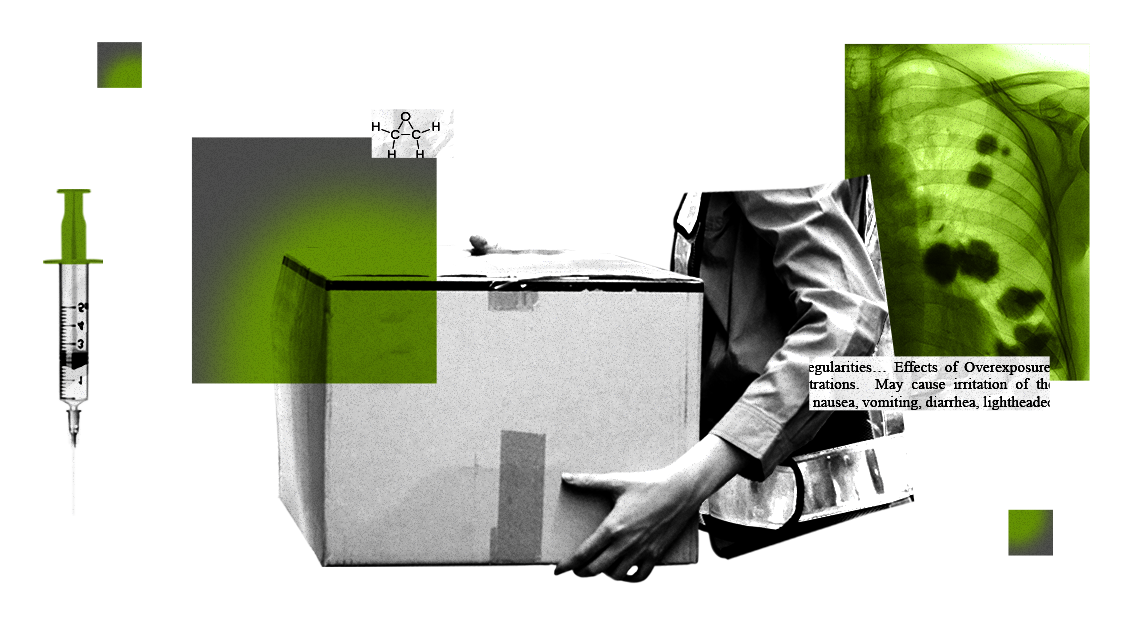People living near plants that use ethylene oxide to sterilize medical equipment have for years pressured regulators to crack down on their toxic emissions. Residents in communities from Laredo, Texas, to Willowbrook, Illinois have tried to shut these facilities down, challenged them in court, and fought for air sampling studies to measure their exposure to the carcinogen.
The Environmental Protection Agency has finally taken notice.
Today the agency finalized new regulations that will require dozens of medical sterilization companies to adopt procedures and technologies that it claims will reduce emissions of the toxic chemical by 90 percent. The rule will take effect within two to three years, a longer timeline than advocates of the change hoped for. Still, regulators and community advocates alike hailed the change.
“We have followed the science and listened to communities to fulfill our responsibility to safeguard public health from this pollution – including the health of children, who are particularly vulnerable to carcinogens early in life,” said EPA Administrator Michael Regan in a press release.
Ethylene Oxide Facts
According to the Food and Drug Administration, more than 50 percent of the nation’s medical equipment is sterilized using ethylene oxide. The nondescript buildings where this fumigation occurs came under scrutiny in 2016, after the EPA revised its risk assessment of the chemical, finding it 30 percent more toxic to adults and 60 percent more toxic to children than previously known. Over the years, studies have linked exposure to the chemical to cancers of the lungs, breasts, and lymph nodes.
The medical sterilization industry has recently warned that too-stringent regulations risk disrupting the supply of medical equipment.
“The industry supports updated standards while ensuring the technology patients rely on around the clock is sterile and well-supplied,” wrote the Advanced Medical Technology Association, a trade group, in a February press release.
After the agency published a 2019 analysis indicating unusually high levels of cancer risk near sterilizers, people around the country rallied against the facilities in their communities, with a Chicago suburb even managing to shut one down. Federal data indicate that more than 96 of these businesses operate in 32 states and Puerto Rico and are concentrated near Latino communities.
Marvin Brown, an attorney at Earthjustice who advocated for stronger oversight of toxic emissions from commercial sterilizers, applauded the new rule, noting that EPA regulations were last revised in 1994, long before the agency was aware of the true risk of ethylene oxide.
“Overall it’s definitely a victory for our clients in terms of getting EPA to finally revise and increase regulations on an industry that’s really been operating with a lack of controls for the past 30 years,” he told Grist in an interview.
The rule will rely upon several measures to achieve an estimated 90 percent reduction in toxic emissions. It requires companies to install air monitors inside their facilities to continuously track the level of ethylene oxide, and report their results to the EPA on a quarterly basis. Brown considers these continuous monitoring systems important because they capture pollutants escaping through leaks and cracks in the sterilization chambers, providing a more comprehensive assessment of the facility’s emissions.
The rule also requires both large and small sterilizers to install “permanent total enclosures,” which creates negative pressure in a building, preventing air from escaping. Instead of being released into the atmosphere and putting nearby residents at risk, any emissions are routed to a device that burns them.
But for all its benefits, Brown said, the new regulation leaves out several important protections residents and advocates fought for. The EPA pushed back the rule’s implementation from 18 months for all sterilizers to 2 years for large facilities and 3 years for smaller ones, a change Brown attributed to industry pressure. The decision will come as a disappointment, he said, to residents who hoped for more immediate relief.
Notably, the new regulations do not require companies to monitor the air near their facilities, making it difficult for communities to assess the concentrations of ethylene oxide near their homes. The agency has argued that such a provision is excessive given the new monitoring requirements inside of facilities, but advocates of the change note that internal monitors don’t capture leaks that happen outdoors, such as from trucks carrying newly sterilized equipment.
Ethylene oxide emissions from the warehouses where medical equipment is stored after sterilization are a growing concern. After fumigation, these items can carry traces of the chemical that evaporate for days or weeks afterwards. Officials in Georgia’s Environmental Protection Division found that this “offgassing” can create substantial concentrations of the chemical in the air, and a recent Grist investigation revealed that dozens of workers at one warehouse in Lithia Springs experienced nausea, headaches, rashes, and seizures after being exposed to these fumes on the job. The EPA’s new regulations do not cover such emissions, an omission Brown called “unfortunate.”
“There’s still a lot more work to be done,” he said of the new rule. “But this is a good step in terms of stricter emission controls, and new emission controls that did not exist before.”
This story was originally published by Grist with the headline EPA finally cracks down on the carcinogen used to sterilize medical equipment on Mar 14, 2024.

